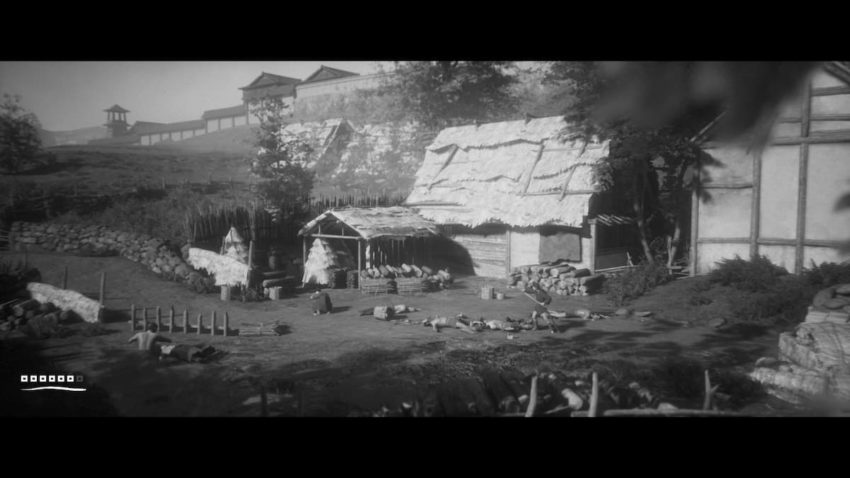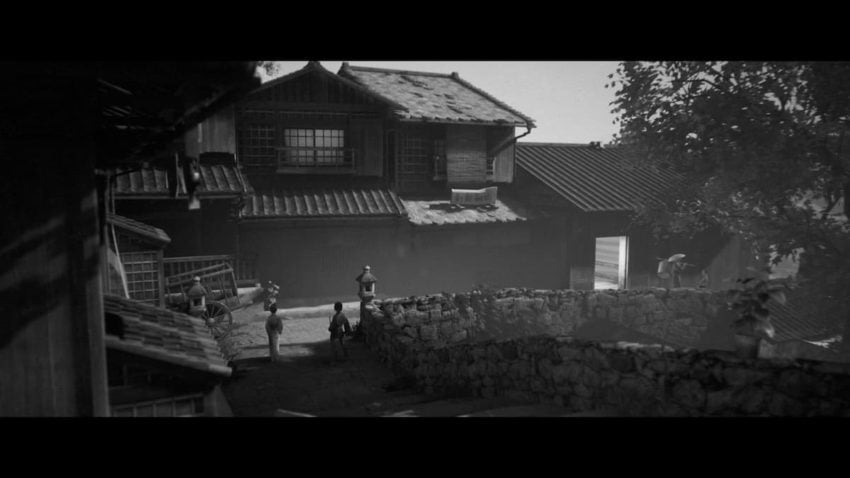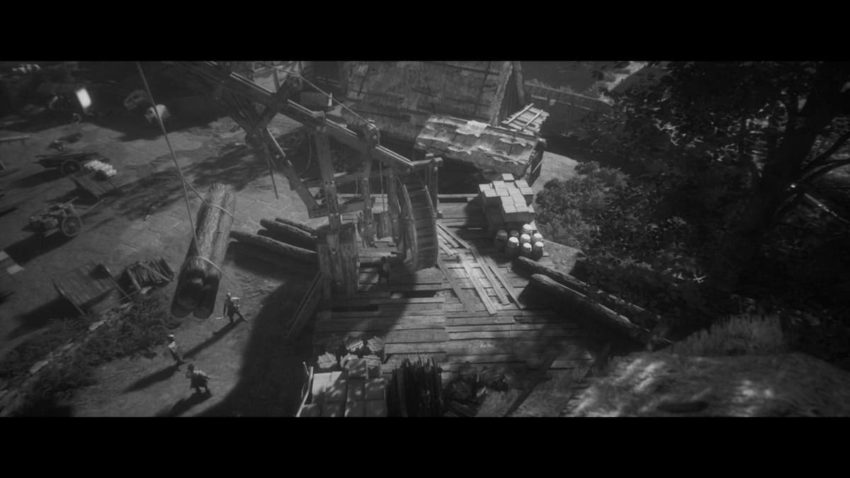Trek to Yomi wears its influences on its sleeve. The next game from Devolver Digital’s increasingly impressive publishing arm is unabashedly trying to capture the magic of an Akira Kurosawa samurai film. You’ll notice it immediately with the film grain that’s imposed over its black-and-white visuals and the plot that centers around a lone samurai. In my short time with the opening few chapters of the game, that classic samurai movie feel is what stood out the most.
It’s not just the visuals that get you there. Trek to Yomi uses a relatively simple control scheme to put you in a series of battles against bandits and other samurai. Because your moveset is limited to just a few attacks and your health pool is relatively small, you’re forced to master timing and blocking to survive each encounter. Dark Souls is an easy comparison, but Yomi is stripped back even further which makes combat feel both more streamlined and cinematic.

You have a light and heavy attack, as well as a limited-use ranged weapon. You can block any attack, but you do need to manage your stamina, or you’ll enter a “tired state” where enemies can more easily hit you. To make things more difficult, you have to press a button to flip directions in this 2D adventure and can’t block attacks behind you. This becomes important when you come up against groups of fighters.
Enemies in Yomi will approach you one at a time. In many games, this can feel a bit odd as a real-life fight would never play out like that. If I got in a bar fight with a group of guys, they’re not going to sit back and give me a fair fight. They’d all attack me at once. Yomi alleviates that oddness a bit because you can’t freely spin around. By making you press a button to turn and face an attacking bandit, it keeps things frenetic. While they’re not attacking all at once, they do come at you in quick succession. You’ll slice a bandit to pieces in front of you and then need to immediately spin around to block his friend’s attack. It’s a chaos you can control with practice, but it’s chaos nonetheless.

Yomi really shines, however, when you come up against stronger enemies that you can’t just mow through with a swipe or two. These fighters will block your attacks or dodge out of the way if you don’t time everything perfectly. That means you’ll actually need to parry their attacks and use combos to whittle them down. I was only able to fight one boss samurai enemy with a health bar, but it was a treat.
With this being a preview, it’s tough to say exactly how indicative this boss fight is of the entire game. Still, Yomi did a lot to change things up from the basic fodder. Not only did the boss have his own unique weapon (a spear, in this case), but he also periodically called in his underlings to put you in a bind while he took a break. I died several times as I figured out his timing but was able to finally down him in just four heavy attacks. Being able to deal with a tough foe with that kind of precision was empowering, giving me that rush of battle that FromSoftware fans are familiar with.

On top of the combat, Yomi gives you plenty of reasons to explore its world. At first, it feels very linear, and to some extent, that’s true. You won’t find branching paths or shortcuts, but treasure hunters will also uncover collectibles and important powerups. Plus, if you keep an eye out, you’ll find environmental traps that let you take out groups of enemies without ever engaging them. These don’t pop up often, but when they did, I got a kick out of getting to skip a deadly encounter.
Again, I’ve only played a short slice of Trek to Yomi, which makes me wonder what more they can do with the combat and exploration to keep things fresh. However, my early time with the game has me convinced that Devolver Digital has yet another hit on its hands. At this point, that’s not really a surprise, but it’s worth noting that 2022 has been full of great indies. Yomi’s early hours might be the best I’ve played yet.







Published: Mar 18, 2022 08:00 am